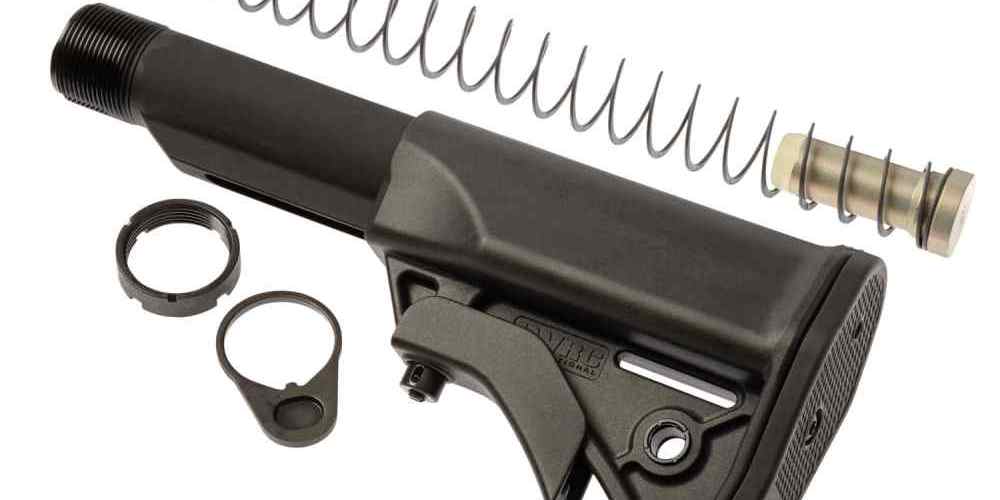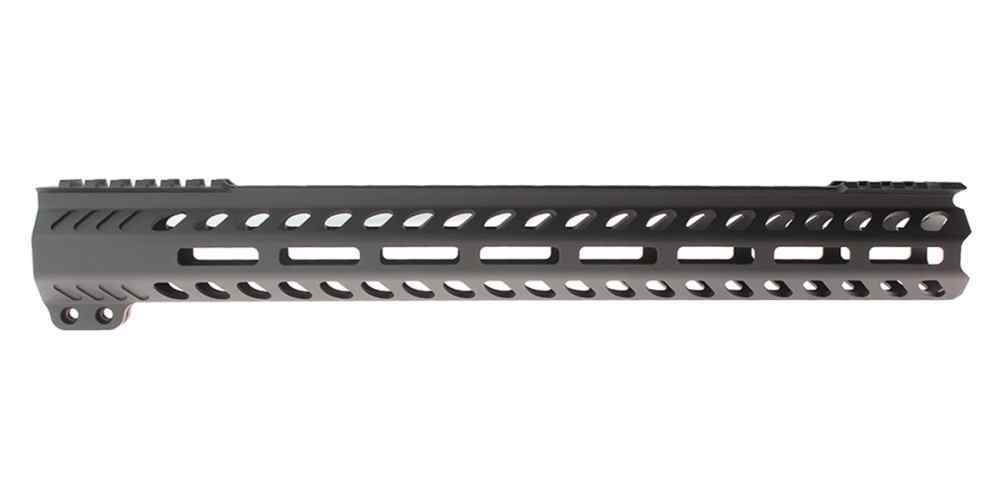“Get back in the action with our quick fixes for AR15 buffer tube troubles!”
Proper Buffer Tube Installation Techniques
Buffer Tube Troubles: Quick Fixes for AR15s
If you’re experiencing issues with your AR15, one of the first places to check is the buffer tube. Proper installation of the buffer tube is crucial for the smooth operation of your firearm. In this article, we will discuss some quick fixes for common buffer tube problems. First and foremost, it’s important to ensure that the buffer tube is properly aligned with the lower receiver. If the buffer tube is not aligned correctly, it can cause malfunctions and affect the overall performance of your AR15. To check the alignment, simply look down the buffer tube and make sure it is in line with the lower receiver. If you find that the buffer tube is misaligned, you can easily fix this issue by loosening the castle nut and adjusting the position of the buffer tube. Once you have aligned the buffer tube with the lower receiver, tighten the castle nut to secure it in place. This simple adjustment can make a world of difference in the functionality of your ar15. Another common issue with buffer tubes is over-tightening the castle nut. When the castle nut is tightened too much, it can put unnecessary stress on the buffer tube and cause it to become misaligned. To avoid this problem, make sure to tighten the castle nut just enough to secure the buffer tube in place, but not so tight that it causes damage. If you have already over-tightened the castle nut, don’t worry – there is a quick fix for this as well. Simply loosen the castle nut and reposition the buffer tube to the correct alignment. Once you have adjusted the buffer tube, tighten the castle nut to the proper torque specifications. This will ensure that the buffer tube is secure without putting too much pressure on it. In addition to proper alignment and torque specifications, it’s also important to use the correct buffer tube for your AR15. There are different types of buffer tubes available, including mil-spec and commercial-spec. Make sure to use the appropriate buffer tube for your specific firearm to avoid compatibility issues. If you are unsure about which buffer tube to use, consult the manufacturer’s guidelines or speak with a knowledgeable gunsmith. Using the wrong buffer tube can lead to malfunctions and potentially damage your AR15, so it’s important to get this right. In conclusion, proper buffer tube installation is essential for the smooth operation of your AR15. By ensuring that the buffer tube is aligned correctly, not over-tightened, and using the correct type for your firearm, you can avoid common buffer tube problems and keep your AR15 running smoothly. Remember to always follow the manufacturer’s guidelines and consult with a professional if you are unsure about any aspect of buffer tube installation. With these quick fixes and proper techniques, you can troubleshoot buffer tube issues and enjoy a reliable and efficient AR15.
Troubleshooting Buffer Tube Misalignments
Buffer Tube Troubles: Quick Fixes for AR15s
If you’re a proud owner of an AR15, you know how important it is to keep your rifle in top condition. One common issue that many AR15 owners face is buffer tube misalignments. This can cause a variety of problems, from cycling issues to accuracy problems. But fear not, there are some quick fixes you can try to get your buffer tube back in line. One of the first things you should check when dealing with a buffer tube misalignment is the castle nut. The castle nut is the nut that secures the buffer tube to the lower receiver. If this nut is not tightened properly, it can cause the buffer tube to become misaligned. Simply tightening the castle nut with a castle nut wrench can often solve this issue. Another common cause of buffer tube misalignments is a loose or damaged end plate. The end plate is the plate that sits between the buffer tube and the lower receiver. If this plate is loose or damaged, it can cause the buffer tube to shift out of alignment. Inspect the end plate for any signs of damage or looseness, and replace it if necessary. If tightening the castle nut and inspecting the end plate don’t solve the issue, you may need to check the alignment of the buffer tube itself. To do this, remove the buffer and buffer spring from the buffer tube and visually inspect the tube for any signs of bending or damage. If you notice any issues, you may need to replace the buffer tube. In some cases, a misaligned buffer tube can be caused by a damaged or worn buffer spring. The buffer spring is responsible for absorbing the recoil of the rifle and returning the buffer to its original position. If the buffer spring is damaged or worn, it may not be able to properly align the buffer tube. Replace the buffer spring with a new one to see if this solves the issue. If none of these quick fixes work, you may need to take your AR15 to a professional gunsmith for further inspection. A gunsmith will have the tools and expertise to diagnose and fix any issues with your buffer tube alignment. It’s always better to be safe than sorry when it comes to the maintenance of your rifle. In conclusion, buffer tube misalignments can be a frustrating issue for AR15 owners. However, with a few quick fixes and some basic maintenance, you can get your buffer tube back in line and keep your rifle running smoothly. Remember to always inspect your rifle regularly and address any issues promptly to ensure the longevity and performance of your AR15.
Upgrading Buffer Tube Components for Improved Performance
Buffer Tube Troubles: Quick Fixes for AR15s
If you’re a proud owner of an AR15, you know that regular maintenance and upgrades are essential to keep your rifle performing at its best. One component that often gets overlooked but plays a crucial role in the overall function of your AR15 is the buffer tube. The buffer tube, also known as the receiver extension, is responsible for housing the buffer and buffer spring, which work together to absorb recoil and cycle the action of the rifle. In this article, we’ll discuss some common buffer tube issues and quick fixes to help you get your AR15 back in top shape. One of the most common problems AR15 owners encounter with their buffer tubes is excessive noise or rattling. This can be caused by a loose fit between the buffer tube and the lower receiver, or by worn out components inside the buffer tube. To address this issue, you can try tightening the castle nut that secures the buffer tube to the lower receiver. If that doesn’t solve the problem, you may need to replace the buffer spring or buffer itself. Upgrading to a heavier buffer can also help reduce noise and improve the overall performance of your AR15. Another issue that AR15 owners may face with their buffer tubes is inconsistent cycling or failure to eject spent casings. This can be caused by a weak or worn out buffer spring, which may not have enough tension to properly cycle the action of the rifle. To fix this issue, you can try replacing the buffer spring with a new one of the same length and weight. If that doesn’t solve the problem, you may need to upgrade to a heavier buffer or consider installing an adjustable gas block to fine-tune the cycling of your AR15. Some AR15 owners may also experience issues with the fitment of aftermarket stocks or braces on their buffer tubes. This can be caused by variations in the diameter or length of the buffer tube, which may not be compatible with certain stock or brace designs. To address this issue, you can try using shims or spacers to adjust the fitment of the stock or brace on the buffer tube. If that doesn’t work, you may need to replace the buffer tube with a different model that is compatible with your chosen stock or brace. In conclusion, the buffer tube is a critical component of your AR15 that plays a key role in the overall function and performance of your rifle. By addressing common buffer tube issues such as excessive noise, inconsistent cycling, or fitment problems, you can ensure that your AR15 operates smoothly and reliably. Whether you need to tighten the castle nut, replace the buffer spring, or upgrade to a heavier buffer, there are quick fixes available to help you get your AR15 back in top shape. Remember to regularly inspect and maintain your buffer tube to keep your AR15 performing at its best.
Buffer Tube Maintenance Tips for AR15s
Buffer tubes are a crucial component of any AR15 rifle, as they house the recoil spring and buffer assembly that helps absorb the recoil of each shot. However, like any part of a firearm, buffer tubes can experience issues that may affect the performance of your rifle. In this article, we will discuss some common buffer tube troubles that AR15 owners may encounter and provide quick fixes to address these issues. One common problem that AR15 owners may face with their buffer tubes is a loose or wobbly fit. This can be caused by a variety of factors, such as a worn-out buffer tube or improper installation. To fix this issue, start by checking the castle nut and end plate to ensure they are properly tightened. If they are loose, use a castle nut wrench to tighten them securely. Additionally, inspect the buffer tube for any signs of wear or damage, and replace it if necessary. Another issue that AR15 owners may encounter with their buffer tubes is a failure to cycle properly. This can be caused by a variety of factors, such as a dirty or damaged buffer spring, a worn-out buffer, or improper lubrication. To address this issue, start by disassembling the buffer tube and inspecting the buffer spring and buffer for any signs of wear or damage. If either component is worn out, replace it with a new one. Additionally, make sure to clean and lubricate the buffer tube regularly to ensure smooth cycling. Some AR15 owners may also experience issues with their buffer tubes becoming stuck or difficult to remove. This can be caused by a variety of factors, such as corrosion, debris buildup, or improper installation. To address this issue, start by applying a generous amount of lubricant to the buffer tube and allowing it to sit for a few minutes. Then, use a rubber mallet to gently tap the buffer tube to loosen it. If the buffer tube is still stuck, consider using a buffer tube wrench to help remove it. In some cases, AR15 owners may find that their buffer tubes are making strange noises when firing their rifles. This can be caused by a variety of factors, such as loose components, worn-out parts, or improper installation. To address this issue, start by checking the castle nut and end plate to ensure they are properly tightened. If they are loose, use a castle nut wrench to tighten them securely. Additionally, inspect the buffer spring and buffer for any signs of wear or damage, and replace them if necessary. In conclusion, buffer tubes are a critical component of any AR15 rifle, and it is important to address any issues that may arise promptly. By following the quick fixes outlined in this article, AR15 owners can ensure that their buffer tubes are functioning properly and their rifles are performing at their best. Remember to regularly inspect and maintain your buffer tube to prevent issues from occurring in the future.
Common Buffer Tube Issues and How to Resolve Them
Buffer Tube Troubles: Quick Fixes for AR15s

If you’re a proud owner of an AR15, you know that it’s a reliable and versatile firearm. However, like any piece of machinery, it can encounter issues from time to time. One common problem that AR15 owners face is buffer tube troubles. In this article, we’ll discuss some of the most common buffer tube issues and provide you with quick fixes to resolve them. One of the most frequent problems AR15 owners encounter with their buffer tubes is a loose fit. This can cause the buffer tube to rattle or move around, affecting the overall performance of the firearm. To fix this issue, you can try tightening the castle nut on the buffer tube. Use a castle nut wrench to ensure a secure fit. If the problem persists, you may need to replace the buffer tube with a new one that fits properly. Another common buffer tube issue is a stuck or jammed buffer spring. This can happen due to dirt, debris, or lack of lubrication. To resolve this issue, remove the buffer tube from the AR15 and clean the buffer spring thoroughly. Apply a generous amount of lubricant to ensure smooth operation. If the buffer spring is damaged, consider replacing it with a new one to prevent future issues. Some AR15 owners may experience a buffer tube that is too short or too long for their firearm. This can cause cycling problems and affect the overall performance of the AR15. To fix this issue, you can replace the buffer tube with one that is the correct length for your firearm. Make sure to measure the length of the buffer tube before purchasing a replacement to ensure a proper fit. If you’re experiencing a buffer tube that is difficult to remove or install, you may need to check the alignment of the buffer tube with the lower receiver. Misalignment can cause the buffer tube to get stuck or not fit properly. To resolve this issue, carefully align the buffer tube with the lower receiver and ensure a secure fit. If the problem persists, you may need to seek professional help to avoid causing further damage to your AR15. In some cases, AR15 owners may encounter a buffer tube that is damaged or worn out. This can happen due to regular wear and tear or improper maintenance. If you notice any cracks, dents, or signs of damage on your buffer tube, it’s essential to replace it with a new one to prevent malfunctions and ensure the safety of your firearm. In conclusion, buffer tube troubles are common issues that AR15 owners may encounter. By following the quick fixes mentioned in this article, you can resolve these problems and ensure the smooth operation of your firearm. Remember to regularly inspect and maintain your AR15 to prevent buffer tube issues and enjoy a reliable shooting experience.






